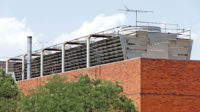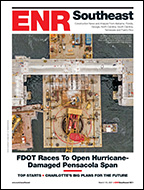A new standard for design guidance on legionellosis is currently available from ASHRAE, formerly known as the American Society of Heating, Refrigerating and Air-Conditioning Engineers. ANSI/ASHRAE Standard 188-2015, Legionellosis: Risk Management for Building Water Systems, sets minimum legionellosis-risk-management requirements for water systems.
ASHRAE developed the standard in response to the 8,000 to 10,000 cases of Legionnaires’ disease reported each year in the U.S. More than 10% of those cases are fatal, says Tom Watson, chair of the ASHRAE committee that wrote the standard. Legionella can also cause a less-severe influenza-like illness known as Pontiac Fever.
The standard is targeted for use by building owners and managers and those involved in the design, construction, installation, commissioning, operation, maintenance and service of centralized water systems and components. The cost is $58; $48 for ASHRAE members.
ASHRAE’s professional certification for high-performance building design recently received accreditation from the American National Standards Institute under the International Organization for Standardization/International Electrotechnical Commission 17024-2012. The third-party accreditation sets the stage for the accreditation of other ASHRAE certification programs, including those in key energy-related jobs, according to ASHRAE.
Launched in 2008, the High-Performance Building Design Professional program offers training and tools for the design of buildings according to criteria of ASHRAE Standard 90.1, for energy efficiency, Standard 62.1, for ventilation, and Standard 55, for thermal comfort. The training also aligns with ASHRAE’s Advanced Energy Design Guide series. Some 171 individuals are currently certified, says the group.





Post a comment to this article
Report Abusive Comment